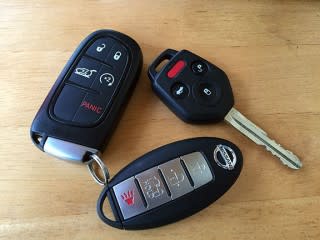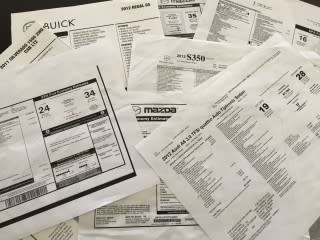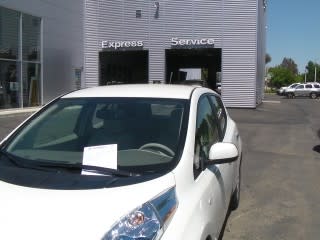5 unethical tricks car dealerships will play on you
Imagine sitting in a car dealership: the scent of new cars and free popcorn mixes with the hustle and bustle for a sensory overload. Excitement is in the air. You're giddy and you're also anxious. You've picked out the model you want—and they just happen to have it in stock. You think you've agreed to a price, and you think that only a stack of papers to satisfy your bank and your state's department of motor vehicles stands between you and a happy drive home in a shiny new ride.
But wait! The dealer still has plenty of opportunities to take a few more bucks from your already thin-feeling wallet. And while there are certainly some great car dealers out there, consumer confidence remains low.
ALSO SEE: How will you get around in the future? Here are 3 possible scenarios
A recent survey by industry auditing firm Total Dealer Compliance (TDC) found that 65 percent of adults surveyed said that they believe new car dealers are unethical. TDC's ultimate goal is to have dealers display a code of ethics in their showrooms, but the firm admits such a move would be a mere step toward improving the overall experience.
To help you navigate your way through the car buying process, we've put together a list of unethical tricks we've seen dealers try to pull, some of which may really surprise you. No automaker is immune to these tricks since dealers operate independently—and they're likely to stay that way as any effort to create showrooms run by automakers has be squashed by dealer lobbying groups in many states.
1. You're handling what? Dealer handling fees
Profit margins—the difference between what the dealer paid the automaker for the car and what they're charging you—are lower than ever on new cars. On some models, especially less expensive cars or those that have sat around in a showroom for a long time, the dealer may truly be making just a few hundred dollars. That could translate into a very slim profit for the dealer once the sales person's commission has been paid out.
To make up for this, many dealers now charge their own, flat rate fee. It's sometimes called a handling fee or a processing fee, and in some markets it can be upwards of $800. Ostensibly, this fee is there to help the dealer recoup a few bucks for filing registration paperwork on behalf of you.
If you live in a metro area where dealer handling charges are the norm, it may be hard to avoid paying this hefty fee. One suggestion is to make a few calls to dealers elsewhere to see if they charge. At the very least, you can try to use this information to try to leverage your way out of paying the fee—or, worst case, you can buy a car in a different city. Hey, who's up for a road trip?
CHECK OUT: Value-packed 2017 Honda CR-V unveiled

2. Sound the alarm! Dealer-installed alarm systems
Your new car may very well have an alarm system installed at the factory by the automaker. That alarm is probably pretty decent—but, if you find yourself parking in unsavory areas, you may consider adding an aftermarket alarm. And even if you don't mention this to the dealer, their finance department could offer one at a cut rate price.
As The Truth About Cars pointed out, an entire cottage industry exists that creates alarms that are, at best, simply ineffective. Depending on how they're installed, they could actually be a massive hinderance since dealers may not properly tap into a car's electrical wiring. If you're presented with an "offer" to buy one of these alarms, do your research.
And run, don't walk, from a dealer that automatically installs alarms on every car in its inventory. Even if you talk your way out of paying for the alarm, you're still saddled with a car that has been questionably modified in a way that very well could violate its factory warranty.

3. Protecting nothing: Absolutely useless add-ons
A dealer may offer you some genuinely useful accessories—quality rubber winter floor mats and window tint come to mind. But then there's pinstriping. And rust-preventing undercoating. And paint sealant. And door edge guards. And we've even seen fabric protection listed as a dealer-installed item on a car with leather seats.
Almost none of these features serves any purpose whatsoever, and combined they can add hundreds, if not thousands, to the manufacturer's suggested retail price. So while the dealer may knock $800 off of a car's sticker price, they're making that—and more—up by charging $1,000 for a useless "protection package."
By that same token, some automakers use distributors to service certain regions. To bolster their bottom line, those distributors also add options. While this practice isn't as egregious as it used to be, you should still be very, very wary of anything not installed at the factory.
READ: Tech-laden 2017 BMW 5-Series arrives, looks like mini-7

4. Read the paperwork
When it comes down to signing on the dotted line(s... since there is a mountain of paperwork ahead of you), read everything closely. We've heard (and experienced) no shortage of horror stories all centered around sitting in the finance office. Check carefully to make sure that the vehicle identification number (or VIN) of the car you're signing on is the one you test drove and decided to buy. Read any disclosures carefully; dealers are required by law to tell you anything out of the ordinary they might know about the car you're ready to buy (maybe it has had some paint work done because someone scraped it on a test drive).
And that low interest rate may not be as simple as you think. Dealers and banks work closely together, so it's worth asking the finance team if they're getting a kickback—or a referral fee—by sending you specifically to the financial institution to whom you'll be writing (a lot of) checks to in the near future. Also, you can always ask what, on top of the principal and interest, you'll be paying for over the course of the loan since there may be additional charges not clearly spelled out in the terms.

5. Above and (too far) beyond: Recommended service intervals
You've already bought your dream ride and, a few months later, it's time for an oil change. A quick look through the owner's manual (read it!) to the maintenance guide (also read it!) shows that, at 5,000 miles, you're just due for an oil change and a tire rotation. But when you pull into the service bay, the friendly adviser whips out a chart of additional maintenance "recommendations." The dealer wants to change the differential fluid, flush the coolant, install new wiper blades, and, our favorite, replace the air filter. Suddenly a $50 visit has become a $500 wallet-grabber and you're left thinking that the cheap-to-maintain car you just bought is going to cost you a grand a year in basic maintenance.
These things do need to be done... someday. Today may or may not be that day.
To be certain, wear items like wiper blades and air filters do need to be replaced eventually, and nearly every fluid or oil should be periodically changed. But many dealers recommend service intervals that go well above what the manufacturer suggests—and automakers are cautious about suggesting service in the first place. We put a lot more trust in what a carmaker's engineers have put into a maintenance guide than what a dealer suggests. If you detect any hint of unscrupulous behavior, refer to your owner's manual.
We'll say it one more time: Read the manual. Follow the automaker's recommendations. They built it, so shouldn't they know how to service it?

 Yahoo Autos
Yahoo Autos 
